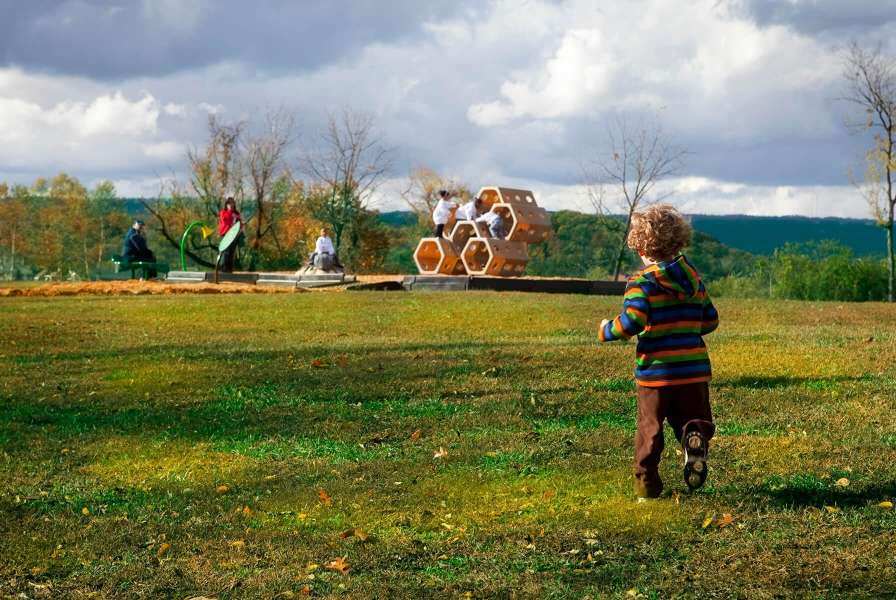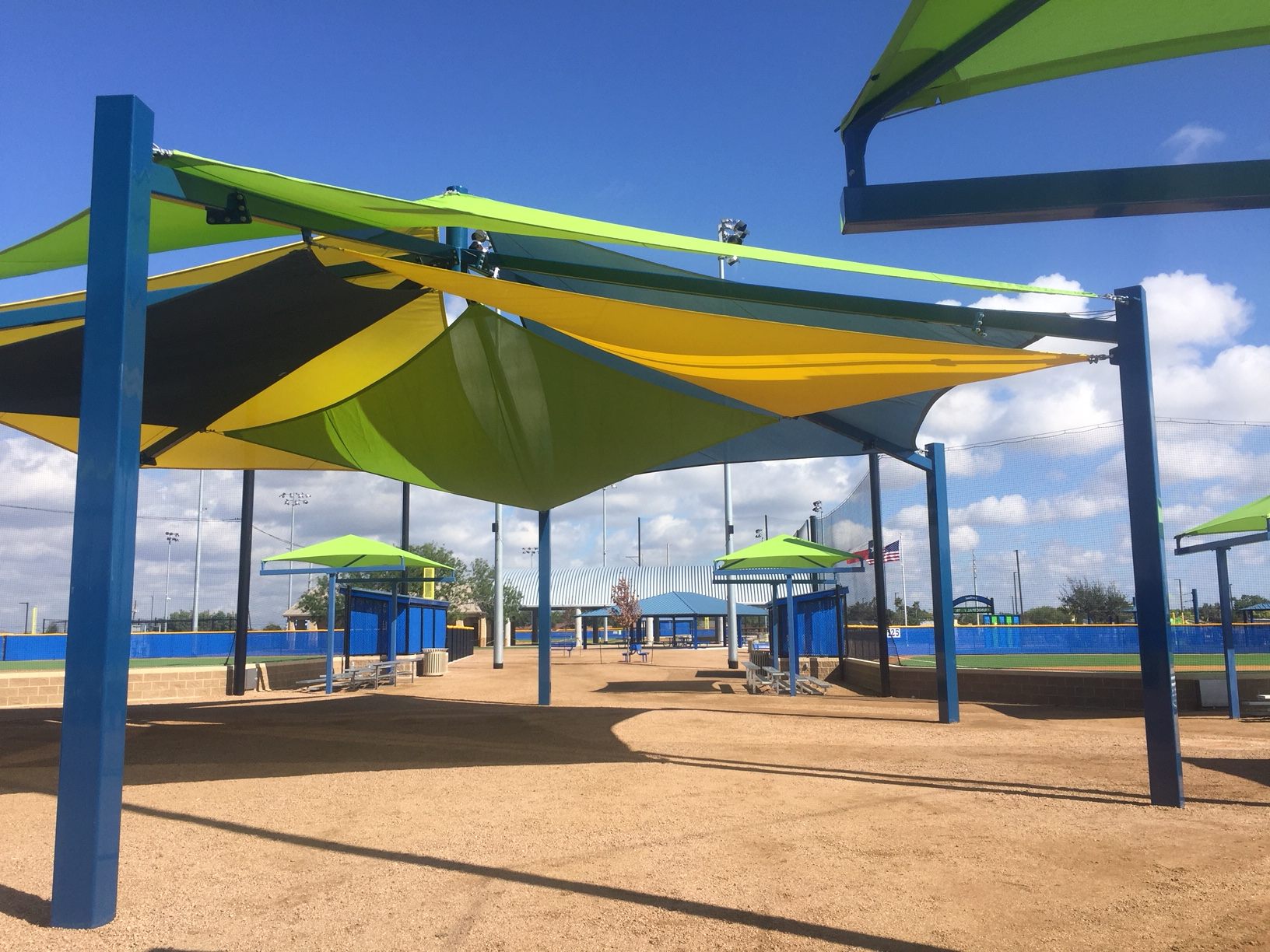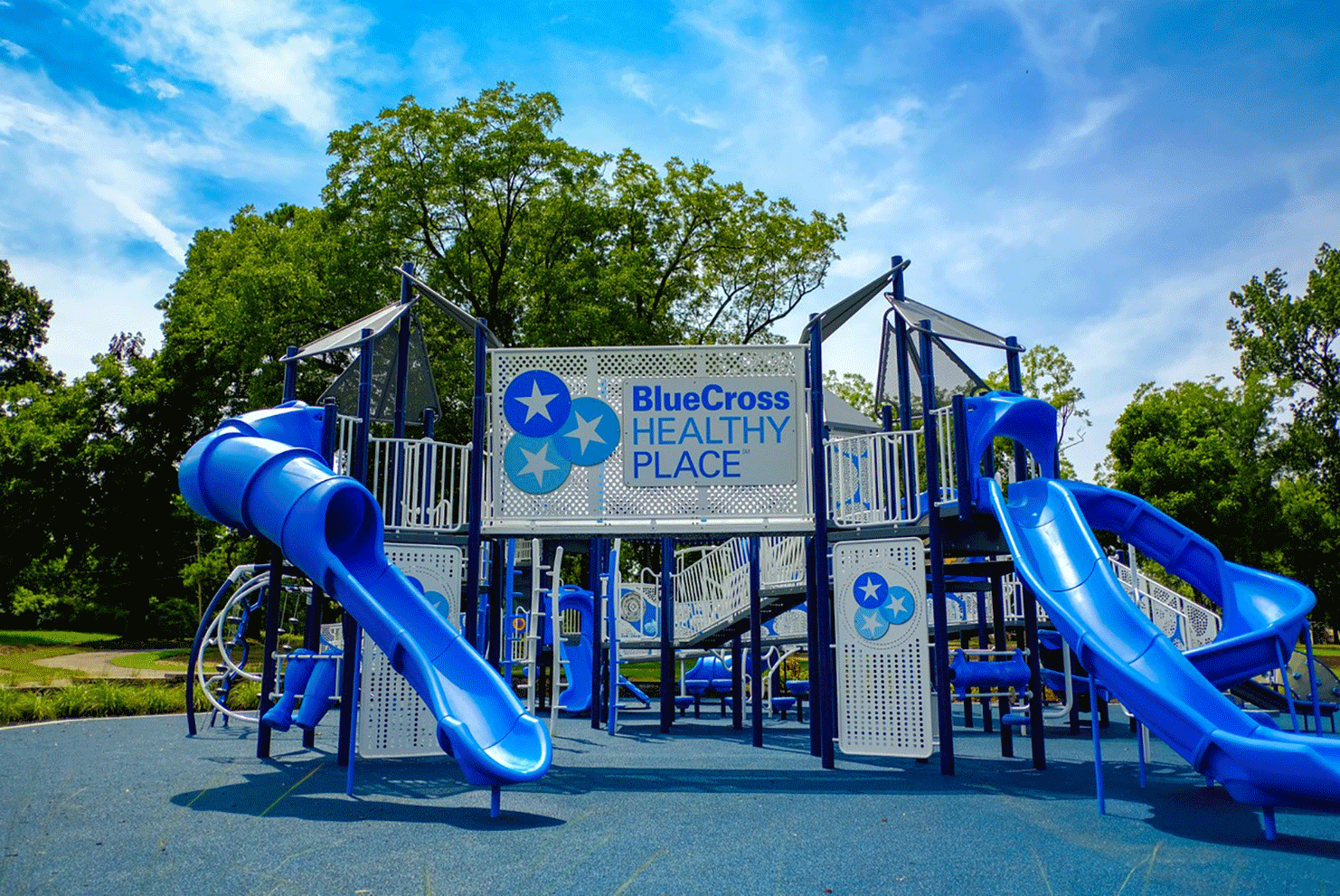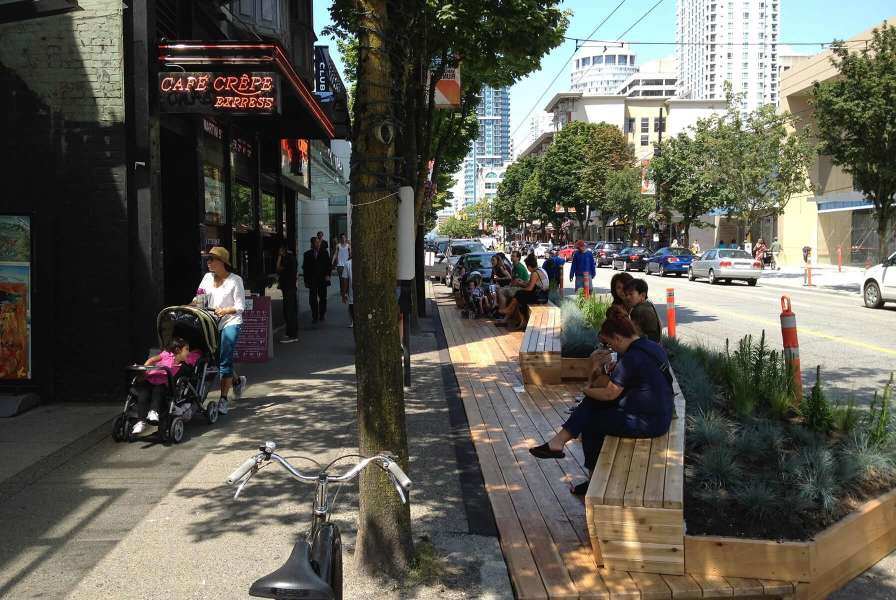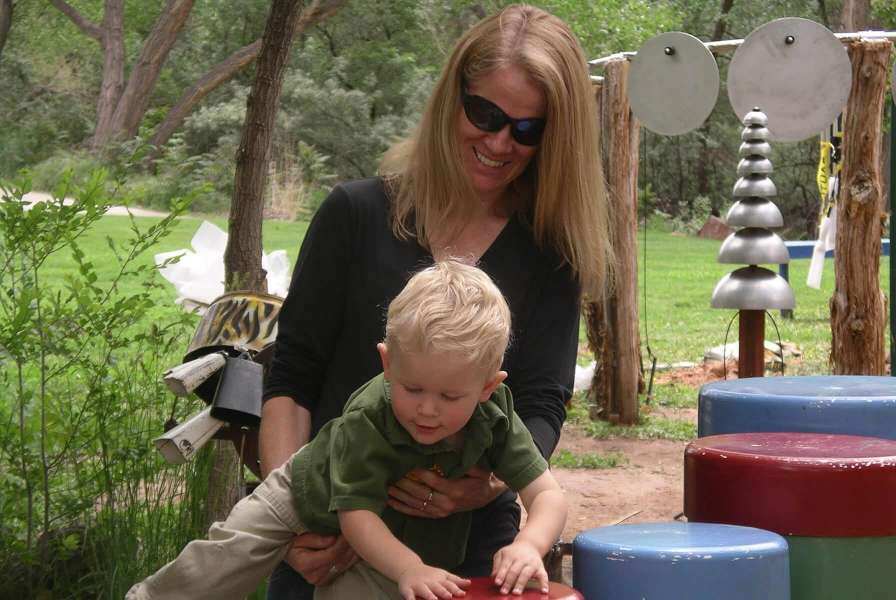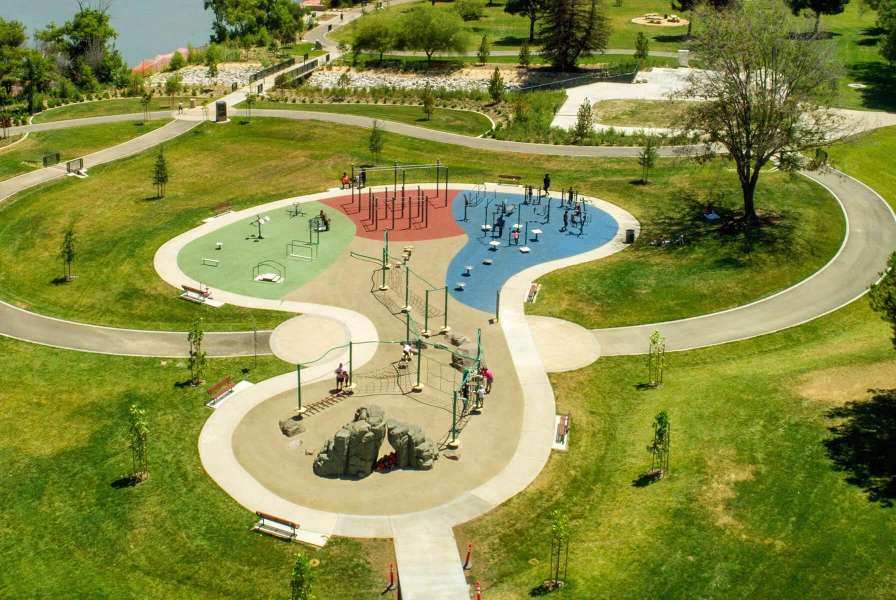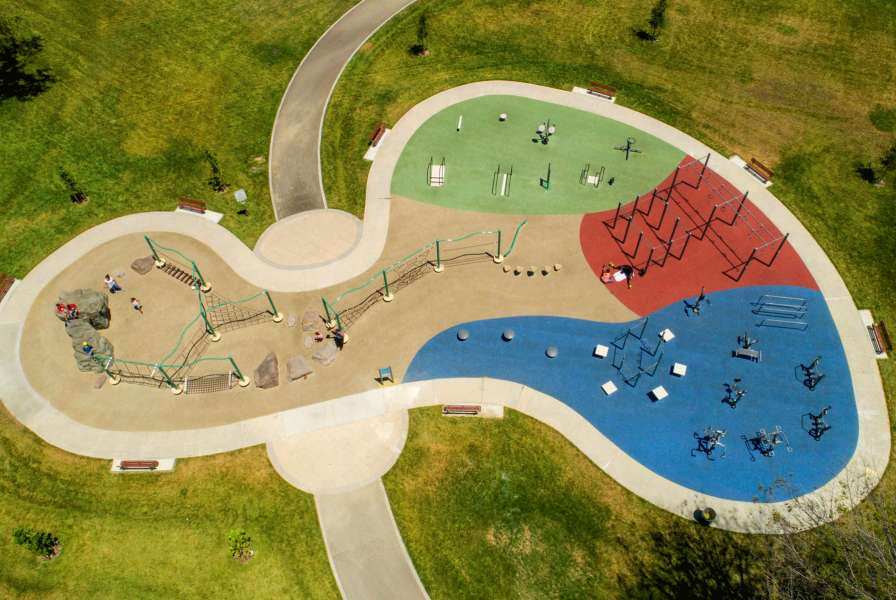Chattanooga’s unique riverfront story has been recognized internationally as a series of successful public and private endeavors. It has helped create new national attractions, inspiring riverfront parks, new retail, restaurants, and housing linked by a delightful riverfront park and trail system. Investments in outdoor recreation continue to foster pride from local residents, reconnecting members of the community with nature, while fueling economic development.
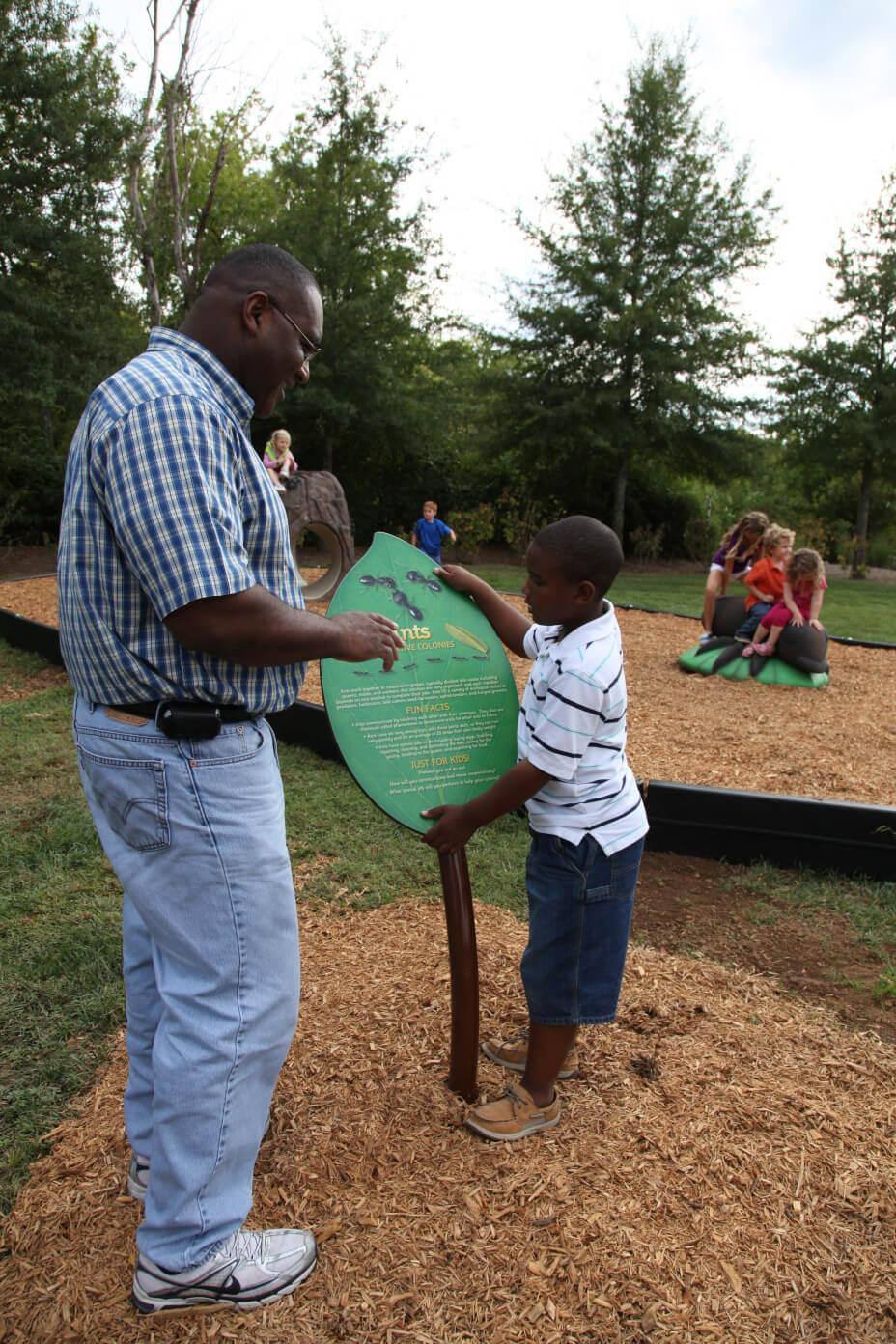
The City of Chattanooga and Hamilton County are dedicated to creating a family-friendly environment with play opportunities for children and decided to develop playful pockets along the existing South Chickamauga Creek Trail at Riverpoint Park. Potential play pockets were initially located using Geographic Information System (GIS) software with input from the Parks and Recreation Departments, which then produced a base for the final masterplan.
The final master plan shows proposed play pocket locations chosen according to best practice guidelines and site constraints. Play pockets clustered near the pathway entrance take advantage of the environmental education value of the woodland setting, which also provide shade. Signage at the play pockets provide families with fun facts about the natural world while encouraging playful activities. The final master plan includes a major looping pathway and secondary pathways added to provide circulation options for children moving between play pockets and future playgrounds.
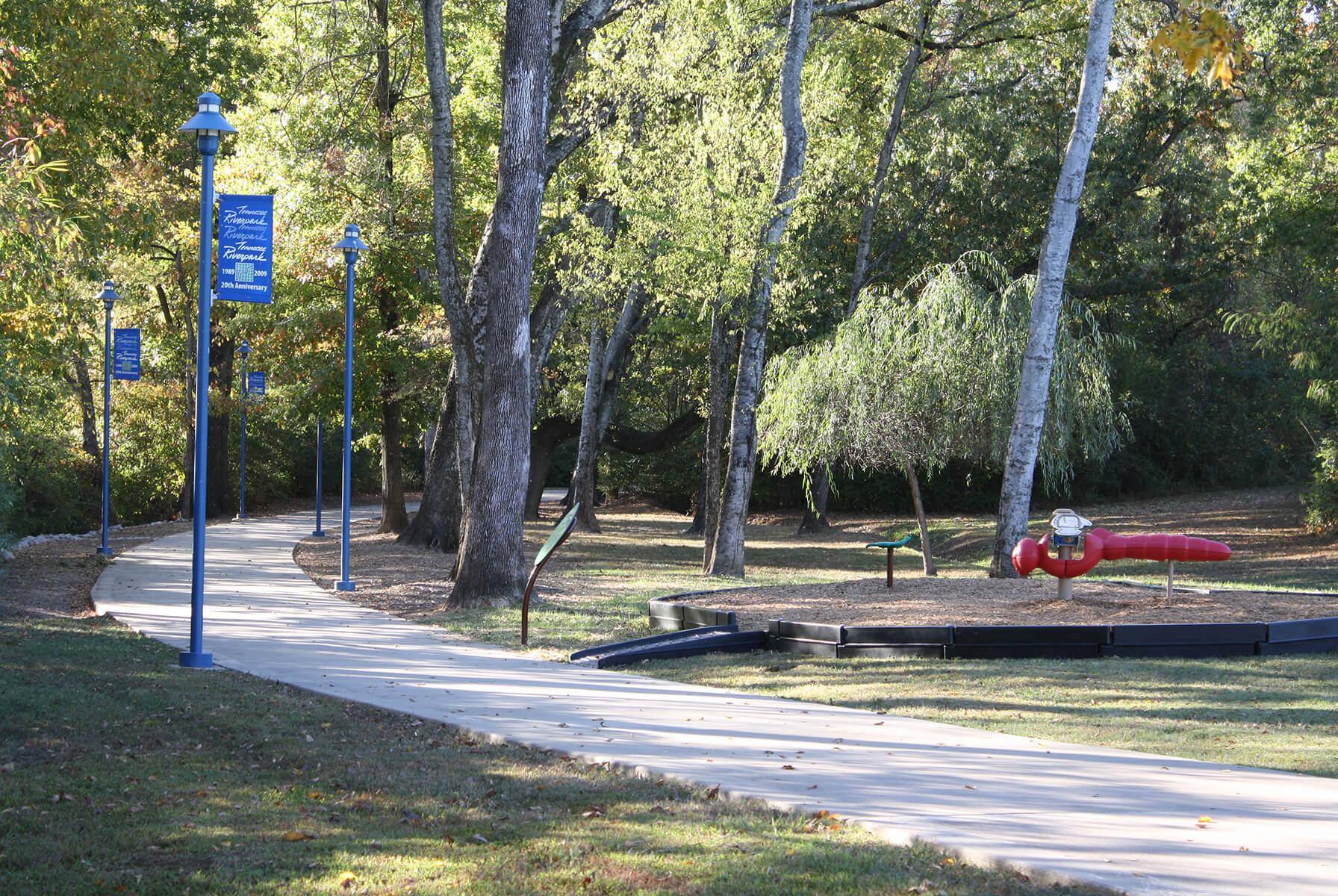 There is a shady play pocket location in the forest that brings play into nature. The pocket is separated from the main pathway by a short distance which, in the future, could be landscaped with low growing vegetation to enhance visual appeal, create a physical buffer, and to provide loose parts for play.
There is a shady play pocket location in the forest that brings play into nature. The pocket is separated from the main pathway by a short distance which, in the future, could be landscaped with low growing vegetation to enhance visual appeal, create a physical buffer, and to provide loose parts for play.
Riverpoint Park is located on a former industrial site that overlooks the picturesque Tennessee River. It is a prominent destination for downtown cyclists and walkers, school groups, families, and individuals seeking an urban park experience for relaxation or exercise. A portion of the site is wooded. Large areas remain in turf grass. A large area of the park was recommended for reforestation. Chattanooga and Hamilton County, like many communities, are concerned about reducing their carbon footprints. Facilitating a return to a natural state promotes this policy by decreasing energy consuming turfgrass maintenance and adding carbon sequestration with the increase in trees.
